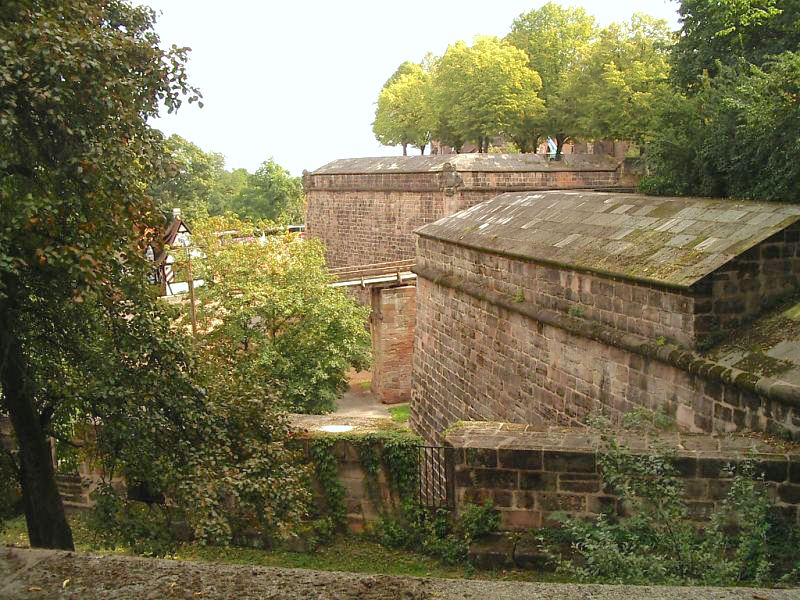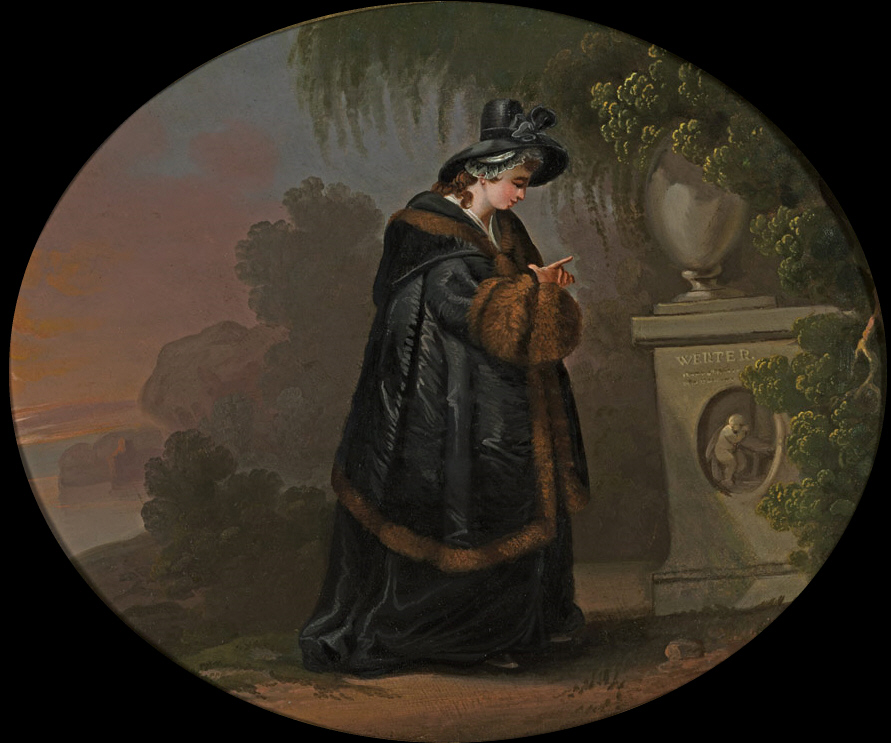|
Franziska Von Reitzenstein
Franziska Freifrau von Reitzenstein (née von Nyss; alias "Franz von Nemmersdorf"; 19 September 1834 – 4 June 1896) was a German novelist. Biography Von Reitzenstein was born the daughter of a judicial counselor (Oberappellations-Gerichtsrat) in Castle Härdenstein in Swabia. She was well educated and moved in aristocratic and noble circles. In 1849 she married the royal Bavarian Rittmeister Freiherr von Reitzenstein. After her husband died in 1853, she travelled to several places of Italy and was inspired to write by Karl Gutzkow. She randomized her male pen name "Franz" in a topographical, statistical lexicon, whereas Nemmersdorf was the former name of a settlement in East Prussia, today Mayakovskoye. Under her pen name she wrote novels in particular, also some with historical themes. Later she followed in Paolo Mantegazza's footsteps and dedicated her work ''Kampf der Geschlechter'' to him, which dealt with the relations between women and men and of the question of women's ... [...More Info...] [...Related Items...] OR: [Wikipedia] [Google] [Baidu] |
Swabia
Swabia ; german: Schwaben , colloquially ''Schwabenland'' or ''Ländle''; archaic English also Suabia or Svebia is a cultural, historic and linguistic region in southwestern Germany. The name is ultimately derived from the medieval Duchy of Swabia, one of the German stem duchies, representing the territory of Alemannia, whose inhabitants interchangeably were called '' Alemanni'' or ''Suebi''. This territory would include all of the Alemannic German area, but the modern concept of Swabia is more restricted, due to the collapse of the duchy of Swabia in the thirteenth century. Swabia as understood in modern ethnography roughly coincides with the Swabian Circle of the Holy Roman Empire as it stood during the Early Modern period, now divided between the states of Bavaria and Baden-Württemberg. Swabians (''Schwaben'', singular ''Schwabe'') are the natives of Swabia and speakers of Swabian German. Their number was estimated at close to 0.8 million by SIL Ethnologue as of ... [...More Info...] [...Related Items...] OR: [Wikipedia] [Google] [Baidu] |
Friedrich Von Thiersch
Friedrich Maximilian Thiersch, after 1897 Ritter von Thiersch (18 April 1852, Marburg – 23 December 1921, Munich), was a German architect and painter in the late Historicist style. Life and work His father, H. W. J. Thiersch, was a prominent theologian and his uncle, Ludwig, was a painter. His older brother, , and his nephew, Paul, were also architects. From 1868 to 1873, he studied architecture at the Technical College of Stuttgart. He then worked for the firm of and Alfred Friedrich Bluntschli, in Frankfurt-am-Main. Following a series of professional disputes, he became a free-lance architect in 1878. He took several trips around Europe, notably Greece, to acquire a knowledge of building history. In 1882, he passed the exam for his habilitation and was appointed a Professor at the Technical University of Munich. Although he stayed there until his retirement (serving as Rector from 1906 to 1908), he designed and built projects throughout Germany. In 1882, he participat ... [...More Info...] [...Related Items...] OR: [Wikipedia] [Google] [Baidu] |
Nuremberg
Nuremberg ( ; german: link=no, Nürnberg ; in the local East Franconian dialect: ''Nämberch'' ) is the second-largest city of the German state of Bavaria after its capital Munich, and its 518,370 (2019) inhabitants make it the 14th-largest city in Germany. On the Pegnitz River (from its confluence with the Rednitz in Fürth onwards: Regnitz, a tributary of the Main (river), River Main) and the Rhine–Main–Danube Canal, it lies in the Bavarian Regierungsbezirk, administrative region of Middle Franconia, and is the largest city and the unofficial capital of Franconia. Nuremberg forms with the neighbouring cities of Fürth, Erlangen and Schwabach a continuous conurbation with a total population of 800,376 (2019), which is the heart of the urban area region with around 1.4 million inhabitants, while the larger Nuremberg Metropolitan Region has approximately 3.6 million inhabitants. The city lies about north of Munich. It is the largest city in the East Franconian dialec ... [...More Info...] [...Related Items...] OR: [Wikipedia] [Google] [Baidu] |
Franz Grandauer
Franz may refer to: People * Franz (given name) * Franz (surname) Places * Franz (crater), a lunar crater * Franz, Ontario, a railway junction and unorganized town in Canada * Franz Lake, in the state of Washington, United States – see Franz Lake National Wildlife Refuge Businesses * Franz Deuticke, a scientific publishing company based in Vienna, Austria * Franz Family Bakeries, a food processing company in Portland, Oregon * Franz-porcelains, a Taiwanese brand of pottery based in San Francisco Other uses * ''Franz'' (film), a 1971 Belgian film * Franz Lisp, a dialect of the Lisp programming language See also * Frantz (other) * Franzen (other) Franzen or Franzén is a Scandinavian surname. Notable people with the surname include: *Anders Franzén (1918–1993), Swedish underwater archaeologist * Arno Franzen, Brazilian rower *Arvid Franzen (1899–1961), Swedish-American accordionist and ... * Frantzen (other) {{disambiguation ... [...More Info...] [...Related Items...] OR: [Wikipedia] [Google] [Baidu] |
Julius Grosse
Julius Waldemar Grosse (25 April 1828 – 9 May 1902), German poet, the son of a military chaplain, was born at Erfurt. Biography He received his early education at the gymnasium in Magdeburg, and on leaving school and showing disinclination for the ministry, entered an architect's office. But his mind was bent upon literature, and in 1849 he entered the university of Halle, where, although inscribed as a student of law, he devoted himself almost exclusively to letters. His first poetical essay was with the tragedy '' Cola di Rienzi'' (1851), followed in the same year by a comedy, ''Eine Nachtpartie Shakespeares'', which was at once produced on the stage. The success of these first two pieces encouraged him to follow literature as a profession, and proceeding in 1852 to Munich, he joined the circle of young poets of whom Paul Heyse and Hermann Lingg (1820-1905) were the chief. For six years (1855-1861) he was dramatic critic of the Neue Münchener Zeitung, and was then for a ... [...More Info...] [...Related Items...] OR: [Wikipedia] [Google] [Baidu] |
The Sorrows Of Young Werther
''The Sorrows of Young Werther'' (; german: Die Leiden des jungen Werthers) is a 1774 epistolary novel by Johann Wolfgang Goethe, which appeared as a revised edition in 1787. It was one of the main novels in the ''Sturm und Drang'' period in German literature, and influenced the later Romantic movement. Goethe, aged 24 at the time, finished ''Werther'' in five and a half weeks of intensive writing in January to March 1774. It instantly placed him among the foremost international literary celebrities and was among the best known of his works. Plot summary Most of ''The Sorrows of Young Werther'', a story about a young man's extreme response to unrequited love, is presented as a collection of letters written by Werther, a young artist of a sensitive and passionate temperament, to his friend Wilhelm. These give an intimate account of his stay in the fictional village of Wahlheim (based on , near Wetzlar), whose peasants have enchanted him with their simple ways. There he meets Charl ... [...More Info...] [...Related Items...] OR: [Wikipedia] [Google] [Baidu] |
Gozzi
Gozzi is an Italian surname. Notable people with the surname include: * Rasmus Gozzi (born 1993), Swedish artist * Anders Gozzi (born 1967), Swedish professional ice hockey player * Carlo Gozzi (1720–1806), Italian dramatist * Gasparo Gozzi (1713–1786), Italian critic and dramatist * Patricia Gozzi (born 1950), French actress * Simone Gozzi (born 1986), Italian footballer {{surname, Gozzi Italian-language surnames ... [...More Info...] [...Related Items...] OR: [Wikipedia] [Google] [Baidu] |
Wrocław
Wrocław (; , . german: Breslau, , also known by other names) is a city in southwestern Poland and the largest city in the historical region of Silesia. It lies on the banks of the Oder in the Silesian Lowlands of Central Europe, roughly from the Sudeten Mountains to the south. , the official population of Wrocław is 674,132 making it the third largest city in Poland. The population of the Wrocław metropolitan area is around 1.25 million. Wrocław is the historical capital of Silesia and Lower Silesia. Today, it is the capital of the Lower Silesian Voivodeship. The history of the city dates back over 1,000 years; at various times, it has been part of the Kingdom of Poland, the Kingdom of Bohemia, the Kingdom of Hungary, the Habsburg monarchy of Austria, the Kingdom of Prussia and Germany, until it became again part of Poland in 1945 as the result of territorial changes of Poland immediately after World War II. Wrocław is a university city with a student popula ... [...More Info...] [...Related Items...] OR: [Wikipedia] [Google] [Baidu] |
Pope Paul VI
Pope Paul VI ( la, Paulus VI; it, Paolo VI; born Giovanni Battista Enrico Antonio Maria Montini, ; 26 September 18976 August 1978) was head of the Catholic Church and sovereign of the Vatican City State from 21 June 1963 to his death in August 1978. Succeeding John XXIII, he continued the Second Vatican Council, which he closed in 1965, implementing its numerous reforms. He fostered improved ecumenical relations with Eastern Orthodox and Protestant churches, which resulted in many historic meetings and agreements. Montini served in the Holy See's Secretariat of State from 1922 to 1954. While in the Secretariat of State, Montini and Domenico Tardini were considered to be the closest and most influential advisors of Pope Pius XII. In 1954, Pius named Montini Archbishop of Milan, the largest Italian diocese. Montini later became the Secretary of the Italian Bishops' Conference. John XXIII elevated him to the College of Cardinals in 1958, and after the death of John XXIII, Montin ... [...More Info...] [...Related Items...] OR: [Wikipedia] [Google] [Baidu] |
Pope
The pope ( la, papa, from el, πάππας, translit=pappas, 'father'), also known as supreme pontiff ( or ), Roman pontiff () or sovereign pontiff, is the bishop of Rome (or historically the patriarch of Rome), head of the worldwide Catholic Church, and has also served as the head of state or sovereign of the Papal States and later the Vatican City State since the eighth century. From a Catholic viewpoint, the primacy of the bishop of Rome is largely derived from his role as the apostolic successor to Saint Peter, to whom Petrine primacy, primacy was conferred by Jesus, who gave Peter the Keys of Heaven and the powers of "binding and loosing", naming him as the "rock" upon which the Church would be built. The current pope is Pope Francis, Francis, who was 2013 papal conclave, elected on 13 March 2013. While his office is called the papacy, the ecclesiastical jurisdiction, jurisdiction of the episcopal see is called the Holy See. It is the Holy See that is the sovereign enti ... [...More Info...] [...Related Items...] OR: [Wikipedia] [Google] [Baidu] |
Doge
A doge ( , ; plural dogi or doges) was an elected lord and head of state in several Italian city-states, notably Venice and Genoa, during the medieval and renaissance periods. Such states are referred to as "crowned republics". Etymology The word is from the Venetian language, reaching English via French. ', along with the related English word ''duke'' and the Italian '', '' (masculine) and ' (feminine) all descend from the Latin ', meaning either "spiritual leader" or "military commander". However, the words ''duce'' and ''Duca'' are not interchangeable. Moreover, ''Duca'' (duke) is an aristocratic and hereditary title. The wife of a doge is styled a '' Dogaressa'' and the office of the doge is termed ''dogeship''. Usage The title of ''doge'' was used for the elected chief of state in several Italian " crowned republics". The two best known such republics were Venice (where in Venetian he was called ) and Genoa (where he was called a ) which rivalled each other, and the ... [...More Info...] [...Related Items...] OR: [Wikipedia] [Google] [Baidu] |







